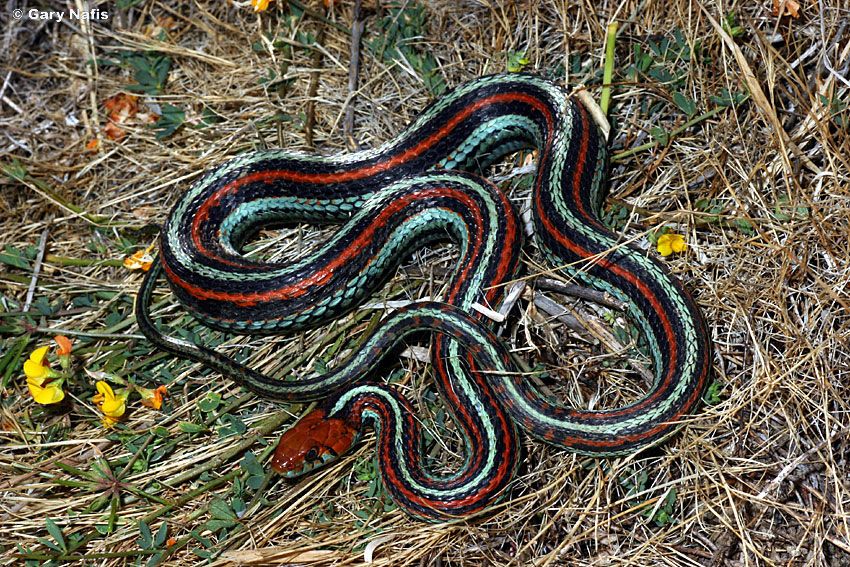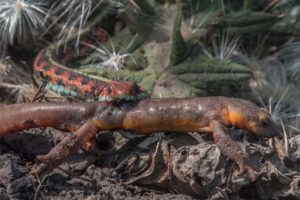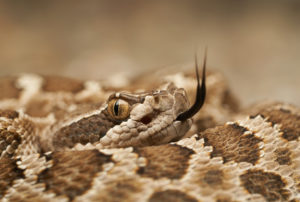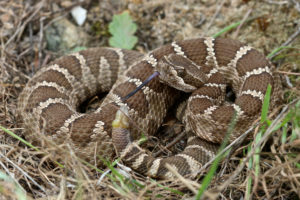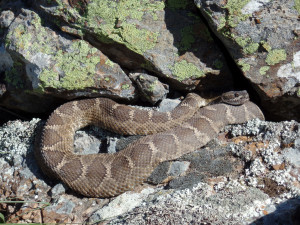Are you ready for the Year of the Snake? February 10, 2013 marks the beginning of the Chinese New Year with the snake symbolizing steady progress, discipline, and attention to detail.
Snakes have long been characters in human mythology, linked to everything from immortality to crop health. Their reclusive nature and unblinking eyes certainly inspire a sense of otherworldliness, and here in the Bay we’re lucky to have these striking yet familiar animals in our midst.
“In many places, snakes are killed because they’re feared so much,” says Jens Vindum, Senior Collections Manager for the Herpetology Department at the California Academy of Sciences. “In the Bay Area we only have one kind of venomous snake, the rattlesnake, we have to watch out for. If more people knew that, fewer harmless snakes would be killed every year.”
In fact, most Bay Area snakes don’t use aggression as a defense mechanism. They’re far more likely to flash a bright underbelly, curl into ball, or spray stinky musk if they want to be left alone.
The long-nosed snake has a particularly dramatic way of discouraging predators. It writhes its body as it releases blood and a foul-smelling musk from the cloaca, smearing the mix all over itself as it contorts. It will also vibrate its tail to mimic a rattlesnake, which can sound unnervingly like one in dry leaves.
Other snakes rattle their tails as well. The Pacific gopher snake not only vibrates it’s tail, but assumes a coiled striking position and can even flatten it’s normally thumb-shaped head to become more triangular, like a rattlesnake’s.
So how else do snakes avoid danger, find prey, or find mates? One tool in their arsenal is scent. You’ve probably heard that snakes smell with their tongues, but how exactly does that work?
All snakes have something called a Jacobson’s, or vomeronasal, organ located on the roof of their mouth. The tongue flicks out and odor particles are gathered, then the tongue brushes these particles against the organ and chemical signals are sent to the brain. The snake can figure out where the scent is coming from, thanks to it’s forked tongue (one side will have a stronger scent signal than the other).
Although tongue-flicking is a habit that’s usually synonymous with snakes, they’re not the only ones that have a Jacobson’s organ. Lizards, elephants, and some primates have highly developed vomeronasal organs, too.
Another tidbit on snakes – they hear with their bones.
Snakes don’t have external ears, but sound vibrations are picked up through their lower jawbone. These vibrations travel through the jawbone to a “traditional” inner-ear, where they’re converted into electrical pulses and sent to the brain. Through this they find prey by picking up the shuffle of a mouse in the grass or the ribbit of a frog in a swamp, and fulfill their role in the Bay Area ecosystem.
“Snakes fill a variety of predatory niches,” says Jim McGuire, the herpetology curator at the Museum of Zoology at UC Berkeley. “They’re not quite apex predators since they’re eaten by bobcats, golden eagles, and other animals, but they’re near the top of the food chain in most areas.”
When asked if he knows of any non-native snakes in the area, McGuire pauses and says, “You know, I can’t think of a single one.”
Considering the Bay Area is awash in non-natives, perhaps this speaks to a certain specialization snakes must have to survive here.
According to Chinese mythology a snake in the house means the family will be prosperous, and people born in the year of the snake are said to be refined, intuitive, introspective, and collected — traits I’m sure we all aspire to. Maybe this is the perfect time to adopt the snake as inspiration. We’ll smell with our tongues and hear with our bones, and gain new perspective by taking a closer look at what we don’t understand,or maybe even fear.
Happy Year of the Snake! Below are a few of our favorite local species.
[slideshow]
Constance Taylor is a Bay Nature editorial intern.

